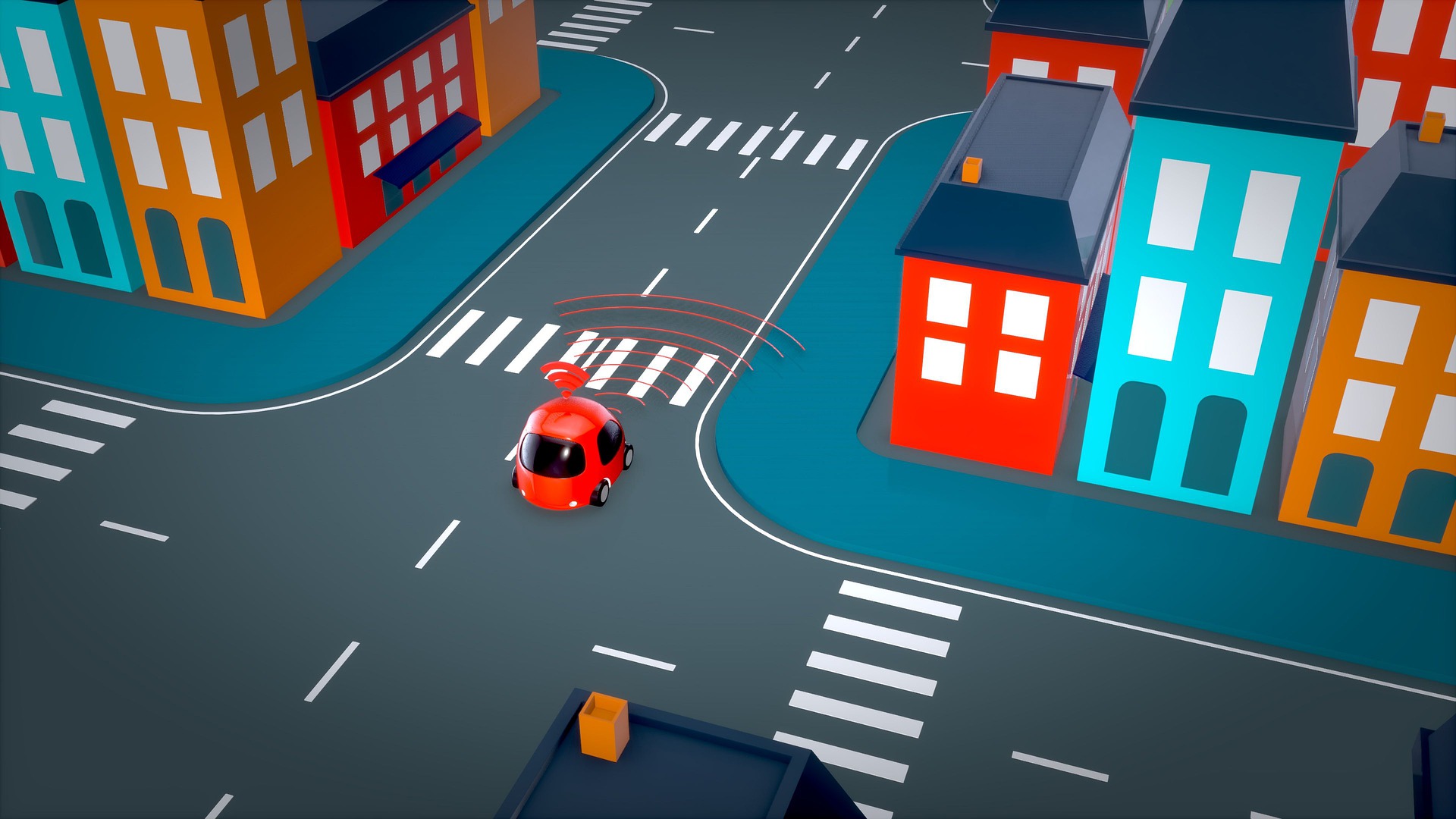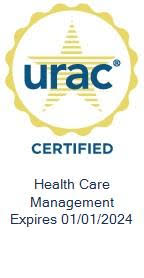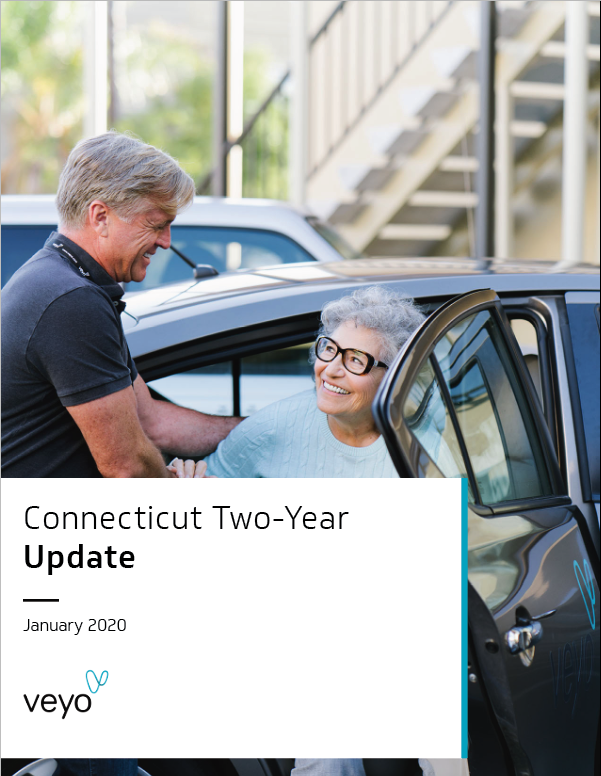Veyo Technology: Non-Emergency Autonomous Transportation in Healthcare, Part 1
January 7, 2019
Each year, 3.6 million Americans miss or delay medical care due to transportation issues. Issues that stem from an overly complex and difficult-to-manage process that has not changed in decades. Quality of service in the non-emergency medical transportation (NEMT) field has been plagued by inadequate technology, outdated business models, inconsistent and unprofessional medical transportation providers, and virtually non-existent transparency for the health plan or customer. In most cases, this results in negative healthcare outcomes, and in more severe cases, can lead to increased ER visits, interference with essential, life-sustaining systems, and possibly lead to death.
Autonomous vehicles promise to be one of the biggest revolutions of our times that will disrupt everything from parking garages to office space. But how will this revolution disrupt the healthcare transportation space? By analyzing the existing smartphone ecosystem, we can find many parallels with the autonomous vehicle space. In the upcoming posts, I will identify some of the similarities and see how they would each play out in the autonomous world in general, and in healthcare transportation specifically.
Part 1 – What makes phones and vehicles smart?
Hardware
In the world of smartphones, Samsung, Apple, and LG are king. In the world of autonomous vehicles, GM, Ford, and Toyota are building today’s “smart” cars. A smartphone is made up of multiple components: modems, cameras, GPS units, etc. These different pieces of hardware are built by various manufacturers and all assembled together to eventually create a smartphone. Today’s smart vehicles are built in the same way with many different pieces of hardware. To enable autonomy today, vehicles are retrofitted with different sensors that allow the vehicle to sense the world around it. LiDARS (Light Detection and Ranging) are the most well-known ones, but there are many different parts that allow an autonomous vehicle to “see” its surroundings and navigate them. And while autonomous vehicles have come a long way, the fully autonomous future seems to move farther out each year. As a result, the commercialization of these products also seems like it will take longer than expected. But as the technology continues to advance, consolidation continues to be a major trend with many startups getting acquired and merged into larger players.
Operating Systems
AppleOS, Android, and OxygenOS, are the major operating systems that provide the foundation of today’s smartphones. The Operating System (OS) provides an API between the apps you use and the hardware of the smartphone, allowing the smartphone to connect to the internet, take calls, know its location, etc. In the autonomous space, it’s the OS that makes a vehicle “smart.” Let’s call it the Autonomous Vehicle Operating System or AV/OS. It’s the layer that connects the different pieces of hardware in a smart vehicle to the passenger’s user interface (i.e. a screen), providing access to everything from the vehicle’s ability to navigate to the music and climate control in the vehicle. Creating an AV/OS that can take all the signals provided by the hardware (the different sensors built into the vehicle), analyze them, and still function in a fully operating vehicle is the current challenge that many manufacturers are trying to solve in the autonomous space.
As vehicles move down the road, there are thousands of data points being collected by the sensors: distance to the vehicle in front, car speed, line location, etc. In the last two years, manufacturers have discovered that it’s difficult for a vehicle to analyze the amount of data provided by all these sensors in a manner that’s still fast enough for the vehicle to make the same split second decisions that humans make all the time. This can be demonstrated in this video showing some of the (simpler) challenges engineers are facing today. Alphabet’s Waymo, Uber, GM through its Cruze, Ford, Toyota, Intel, Apple, almost every big tech player, and numerous startups are working on solving different parts of the puzzle and hoping to put all these solutions together into one AV/OS.
Networks
Once the technical challenges are overcome by the vehicle manufacturers, the next step is the network. Smartphones rely on cellular networks owned by AT&T, Verizon, Vodaphone, Telefonica, and many others. They operate the cellular towers that enable the devices and the operating systems to connect with each other. Cellular network companies also distribute mobile devices to consumers, service the devices, and generate income from the user’s constant use of the network. The phone manufacturer can charge only a one-time fee for the purchase of a device, and the OS creator can charge for the use of its app store and the licensing of its software. But the network provider can reap a huge benefit from maintaining the network and using and then re-using devices on its network in perpetuity. The current cellular networks will also provide the 5G coverage necessary for the significant amounts of data to transfer between vehicles.
In the autonomous space, Uber and Lyft are the current network providers. As the space evolves, network providers will need to provide service to the (smart) transportation devices (hence the current investment in scooters and bikes). Everything from cleaning to charging to servicing the vehicle will need to be part of the network providers’ tool set. Interesting opportunities lie ahead in partnerships with car rental companies who are already experienced with storing and maintaining transportation devices (albeit not very smart ones) today. Many questions still abound. For example, unlike the smartphone that is in use all day, will the ownership model of a smart vehicle shift to network ownership of the devices vs. private ownership? If you only use a smart vehicle for 30 minutes twice a day, do you really need to own it?
Apps
The iPhone was a true revolution when first released in 2007 (yes, only 12 years ago). Not because it was a smartphone. Smartphones existed before the iPhone. It was a revolution thanks to the app store that came out a year after the release of the iPhone in 2008. Suddenly the phone was truly “smart.” Today, the Spotify app makes the smartphone a customized radio station and the YouTube app makes the phone a video editor, broadcasting tool, and movie theater. Google’s combination of Daydream hardware and app make the phone a transformative virtual reality experience. In fact, mobile apps have become ubiquitous, generating more than $92 billion in direct revenue (games, paid apps, etc.) last year and another $251 billion in digital ads. Just as the app store revolutionized the smartphone, smart vehicle “apps” will revolutionize the autonomous vehicle. The in-vehicle apps will be what turns a smart vehicle into a mobile office, a package delivery vehicle, and – what is most relevant to this discussion – a non-emergency autonomous transportation device. In Part 2 we will discuss in detail what additional software and hardware is required to transform a regular autonomous vehicle into a healthcare-specific transportation device.
Michael Singer
As the Executive Vice President of Technology, Michael Singer guides our company’s product and technology vision as the leader of Veyo’s bright team of data scientists, product managers, engineers and designers that build beautiful and scalable solutions. Michael Singer is fluent in six languages and has coded in more than 30 countries on three continents, using at least a dozen environments.
Before working at Veyo, Michael Singer co-founded and served as CTO of Smifr, a social media curation and aggregation platform. Prior to Smifr he worked with CarPro (acquired by Formula), a disruptive SaaS Fleet Management solutions provider. There, he led implementations in Europe and architected its analytics offering until 2008 when he crossed the ocean to be part of Magic Software (acquired by Asseco). At Magic, Michael led major projects for Fortune 500 companies, including the United Nations, UPS and Adidas.
Although Michael’s career has been dedicated to delivering usable and scalable solutions, ultimately his favorite platform remains: his surfboard. Michael resides in San Diego with his wife and twins.




